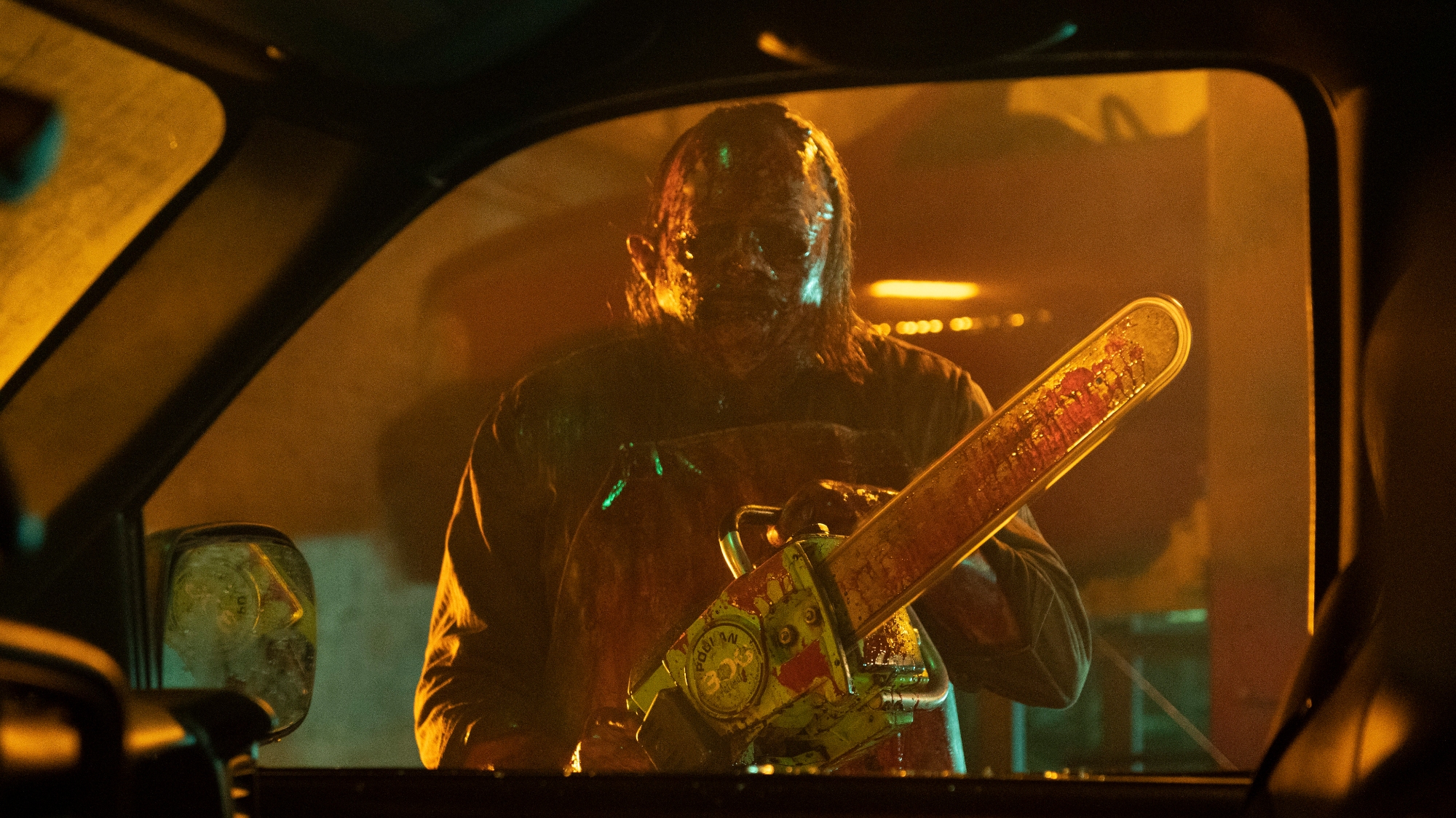‘Texas Chainsaw Massacre’ Movie Review: Leatherface and Sally’s Nonsensical Showdown
Texas Chainsaw Massacre digs into its horror legacy for all of the wrong reasons. David Blue Garcia directs a screenplay written by Chris Thomas Devlin. They tap into the gore and carnage found in the franchise’s later installments and leave the tension and fear from Tobe Hooper’s 1974 original behind. Netflix’s Texas Chainsaw Massacre had potential, but it misses the mark.
‘Texas Chainsaw Massacre’ is a direct sequel set in Harlow, Texas

Nearly 50 years passed since the 1973 carnage that left Sally Hardesty (now played by Olwen Fouéré) as its only survivor. She spent those years preparing for another encounter with Leatherface (Mark Burnham), hoping to finally put an end to all of the nightmares. However, he seems to have simply disappeared off of the face of the planet.
Melody (Sarah Yarkin) and her younger sister, Lila (Elsie Fisher), go on a business venture with their friends, Dante (Jacob Latimore) and Ruth (Nell Hudson). They enter the remote Texas town of Harlow, where they seek to build their own community. However, the group of young friends quickly discover that they intruded on the hiding place of Leatherface. Now, they have to fight for their survival.
Sally Hardesty returns to confront Leatherface
Texas Chainsaw Massacre is a direct sequel to Hooper’s 1974 The Texas Chain Saw Massacre. Therefore, it ignores the continuity of all sequels, remakes, and prequels. However, Sally is more of a plot device than an actual character. Her demons and heart for vengeance are merely glanced over, as Leatherface seeks vengeance of his own against a new crew of young adults.
Devlin’s screenplay is filled to the brim with social commentary. It establishes from the start that it’s wrong to judge a book by its cover, as the young adults tease a local named Richter (Moe Dunford). Ageism is rampant, as millennials, their technology, and their entitlement are the enemies. Texas Chainsaw Massacre is a passing of the torch to a new generation to deal with Leatherface.
The messaging extends to commentary on social media, systemic violence, gentrification, school shootings, and gun ownership. A group of young folks hopes to create a community that steps away from the inevitable crime and violence in most modern societies. However, they don’t realize that they stepped into the most violent place imaginable and will have to overcome their personal horrors to stay alive.
‘Texas Chainsaw Massacre’ taps into legacy content without a purpose

Texas Chainsaw Massacre abandons the campy tone that the majority of the sequels embrace. Rather, it returns to a darker and more serious tone, although lacks the innate visual grittiness of its predecessor. However, it often tries too hard to incorporate far too many pieces of social commentary that feel crossed, confused, and out of place.
Devlin’s screenplay is a head-scratcher. How did Leatherface end up in an orphanage in Harlow? How is he even stronger than in the original film when he’s now around 70 years old? What happened to the Sawyer family? The questions mount up and the movie has no interest in making any of the dots line up.
Texas Chainsaw Massacre boards the legacy train alongside other horror classics, such as Halloween and Scream. However, the motivation is because it’s neat, not to expand on their stories. Garcia doesn’t skimp out on the gore, offering a high body count. Nevertheless, Texas Chainsaw Massacre is a nonsensical nightmare that’s so frustrating because it had so much potential.
Texas Chainsaw Massacre is now streaming exclusively on Netflix.


